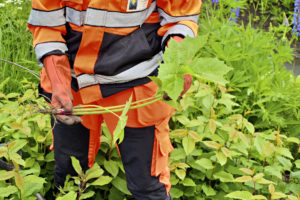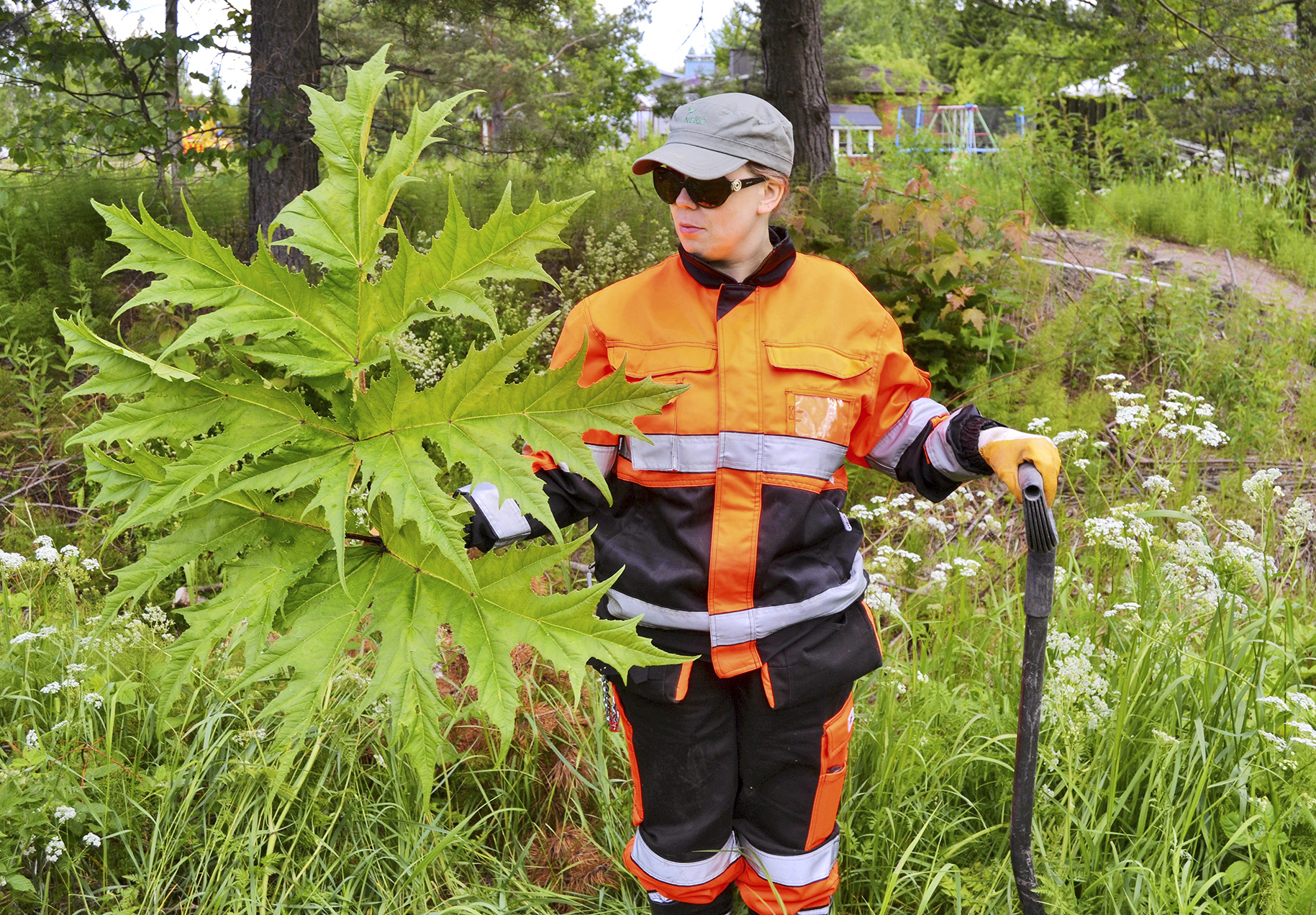n Finnish nature, hogweed is an invasive alien species that smothers the native vegetation as it spreads. It is also dangerous to people, because the sap causes burns when it reacts with sunlight. There is good reason to be careful when eliminating the plant.
“Hogweed thrives almost everywhere and it’s very suitable for our climate because it comes from the Caucasus region. The plant spreads quickly from seeds,” explains Miia Korhonen from the Luontoturva organisation.
The majority of tasks in her company involve eliminating hogweed in the Lahti region. Last autumn, Korhonen eliminated hogweed from land owned by Fingrid near Kouvola.
“We got rid of the hogweed stands under power lines by simply digging them out with a shovel. The seeds were often spread over several dozen metres under the line. It’s not worth using machines because the tyres would have spread the seeds very easily. We received good electrical safety instructions from Fingrid, but there wasn’t much risk involved in using a shovel.
When Fingrid received information about the invasive alien species, the appropriate action was confirmed and work to eliminate the plant will continue this year. Fingrid hopes that landowners and representatives of other stakeholders will continue to share information about invasive alien species in the future.
Rain gear provides protection when dealing with hogweed

If a person fails to identify hogweed and then touches it without protection, hospital treatment may be required. This is especially true if a child’s skin is burned. Remember to protect your skin well if you decide to eliminate the plant yourself.
“Wearing rain gear is the best way to prevent the plant sap from coming into contact with the skin. Using rubber gloves that do not absorb liquid is important. You also have to protect your face, and respiratory protection is also a good idea you’re prone to allergisation. You can remove the plant yourself as long as caution is exercised.
Hogweed blooms in its third year. That’s when the seeds should be carefully collected.
“You can dig up the plant with a shovel. It’s best to put the flower heads and root in a garbage bag and take it to a waste collection centre. The leaves and stem can be left on the ground, because hogweed doesn’t spread from them.”
“To summarise, the flower heads and roots have to be eliminated in a controlled manner and may not be put in the compost because the seeds will spread from there to nature. Do not drag the flower heads around the yard or carry them in a wheelbarrow, because this will spread the seeds. A professional should be contacted if the landowner doesn’t know what should be done or if there is a lot of hogweed. The best time to deal with the plant is in the spring,” says Korhonen.
The law states that an alien species shall not be kept, bred, planted or sown or otherwise handled in a way that it may be released into the environment. Hogweed is included on the EU’s list of invasive alien species that must be combatted. Furthermore, landowners are expected to take reasonable measures to eradicate an invasive alien species.






